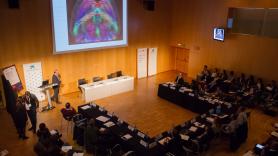More and more, medicine strives for a greater level of precision. Identifying the exact process in each patient for the most precise diagnosis and treatment possible. It seeks to be more efficient and reduce side effects. And it has an increasingly important ally: imaging techniques. Techniques that have evolved from x-rays and MRIs to the latest tools that provide much more specific images, sometimes on a molecular level.
The latest techniques use fluorescence, nanotechnology and intimate knowledge of biology to assess specific drug actions, tumor behavior, or to help surgeons guide and delimit their operations. Use of these techniques on their own or in combination promises to be useful in research, but also in diagnosing and treating diseases. This capacity has given rise to the concept of "theranostics", the combination of diagnosis and treatment in one process.
In order to discuss some of the most recent and important advances, several of the top experts in the world came together on 8 and 9 November for the debate 'Imaging for Life. From Molecules to Diagnostics and Therapy' organized by B·Debate –an initiative of Biocat and the "la Caixa" Foundation to promote scientific debate- in conjunction with the Institut de Biotecnologia i Biomedicina (IBB) – Autonomous University of Barcelona (UAB) and the Jožef Stefan Institute (IJS) - Ljubljana University (Slovenia).
CONCLUSIONS
- From x-rays, imaging techniques have evolved a lot in medicine. They now strive to be more specific and serve as a guide for what is known as molecular medicine
- Most drugs fail in the final stages of development. Better visualizing how they work would help improve their efficacy
- The new imaging techniques cover many medical processes. A new concept has been created, "theranostics", in which they are used simultaneously for diagnosis and treatment
- Cancer is one of the diseases for which imaging is most important. New techniques seek to be useful for diagnosis, prognosis and even guiding surgeons during operations



